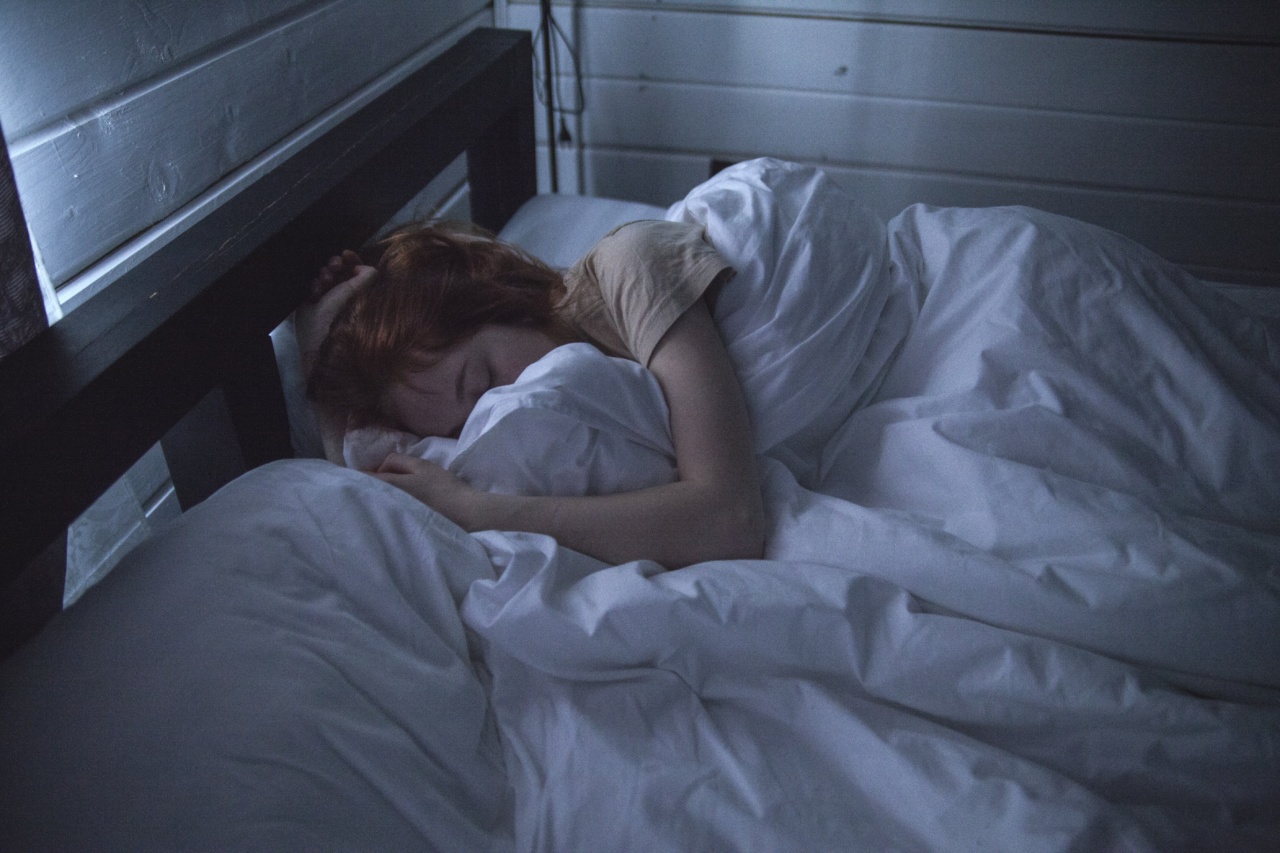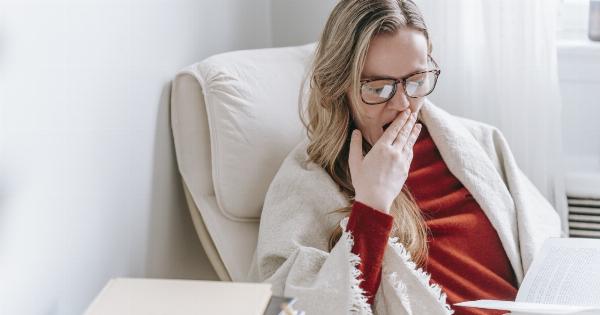Sleep apnea is a sleep disorder that affects millions of people worldwide. It is characterized by pauses in breathing or shallow breaths while sleeping.
These pauses can last for a few seconds to a few minutes and can occur multiple times throughout the night. Sleep apnea can have a significant impact on your quality of sleep and overall well-being. However, there are exercises that can help alleviate the symptoms of sleep apnea and improve your sleep.
In this article, we will explore some exercises that can help you get a better night’s sleep.
1. Tongue Exercises
Tongue exercises can be beneficial in preventing the tongue from blocking your airway during sleep. They target the muscles of the tongue and throat, which can help keep the airway open. Here are some simple tongue exercises you can try:.
Tongue Slide: Push the tip of your tongue against the roof of your mouth and then slide it backward. Repeat this exercise several times.
Tongue Push-Ups: Press the entire tongue against the roof of your mouth, and then press it downward against the floor of your mouth. Repeat this exercise multiple times.
Tongue Curl: Curl the sides of your tongue upward toward the roof of your mouth. Hold this position for a few seconds and then relax. Repeat.
2. Jaw Exercises
Jaw exercises can help strengthen the muscles in your jaw and improve your breathing during sleep. Here are a few jaw exercises to consider:.
Jaw Opening: Open your mouth as wide as possible and hold for a few seconds. Close your mouth and repeat.
Jaw Slides: Slowly open your mouth, sliding your lower jaw to the right. Hold for a few seconds and then slide your jaw to the left. Repeat this exercise multiple times.
Chin Lifts: Tilt your head back and look up towards the ceiling. Push your lower jaw forward and feel a stretch in the front of your neck. Hold for a few seconds and relax. Repeat.
3. Throat Exercises
Throat exercises can help strengthen the muscles in your throat and reduce the likelihood of a blocked airway during sleep. Here are some exercises to try:.
Guttural Sound: Make a low-pitched guttural sound, similar to the letter “ahh.” Hold the sound for a few seconds and repeat.
Throat Constrictions: Swallow and imagine that you are swallowing something large. Feel the muscles in the back of your throat constrict. Repeat this exercise multiple times.
Soft Palate Lift: Open your mouth and say “ahh.” While keeping your mouth open, try to touch the back of your throat with the back of your tongue. Hold for a few seconds and repeat.
4. Breathing Exercises
Breathing exercises can help improve your overall breathing patterns and increase the flow of oxygen. Here are a few breathing exercises that can be beneficial for sleep apnea:.
Deep Breathing: Sit or lie down comfortably. Inhale deeply through your nose, allowing your belly to rise. Exhale slowly through your mouth, emptying your lungs completely. Repeat this exercise for a few minutes.
Diaphragmatic Breathing: Place one hand on your chest and the other on your abdomen. Breathe in deeply through your nose, feeling your abdomen rise as you inhale. Exhale slowly through your mouth, feeling your abdomen lower.
Practice this exercise regularly.
Alternate Nostril Breathing: Close your right nostril with your right thumb and inhale deeply through your left nostril. Close your left nostril with your right index finger, and exhale through your right nostril.
Repeat this exercise, alternating nostrils.
5. Neck and Shoulder Exercises
Neck and shoulder exercises can help improve posture and relieve tension in the muscles surrounding the airway. Here are a few exercises to consider:.
Neck Rotation: Slowly rotate your head to the right, bringing your chin towards your right shoulder. Hold for a few seconds and then repeat on the left side. Repeat this exercise multiple times.
Shoulder Rolls: Roll your shoulders forward in a circular motion. After a few rotations, roll them backward. Repeat this exercise several times.
Head Tilts: Tilt your head to the right, bringing your right ear towards your right shoulder. Hold for a few seconds and then repeat on the left side. Repeat this exercise multiple times.
6. Weight Loss
Excess weight can contribute to sleep apnea. Losing weight can help reduce the severity of symptoms and improve your quality of sleep. Incorporate a balanced diet and regular exercise into your routine to achieve gradual and sustainable weight loss.
7. Lifestyle Changes
In addition to exercises, certain lifestyle changes can also help manage sleep apnea:.
Quit Smoking: Smoking can worsen sleep apnea symptoms. Quitting smoking can improve your overall respiratory health and reduce the severity of sleep apnea.
Avoid Alcohol and Sedatives: Alcohol and sedatives relax the muscles in the throat, increasing the risk of airway blockage. Limit your consumption or avoid them altogether.
Establish a Regular Sleep Schedule: Try to go to bed and wake up at the same time every day. A consistent sleep schedule can regulate your body’s internal clock and improve your sleep quality.
8. Consult with a Healthcare Professional
If you suspect that you have sleep apnea or if your symptoms persist despite trying various exercises, it is essential to consult with a healthcare professional.
They can diagnose the condition and recommend appropriate treatment options based on the severity of your sleep apnea.
9. Continuous Positive Airway Pressure (CPAP) Therapy
CPAP therapy is a widely used treatment for sleep apnea. It involves wearing a mask over your nose or mouth while sleeping, which delivers a constant flow of air to keep your airway open.
If recommended by your healthcare professional, using a CPAP machine can effectively manage sleep apnea and improve your quality of sleep.
10. Summary
Sleep apnea can significantly impact your quality of sleep and overall well-being. Incorporating exercises targeting the tongue, jaw, throat, and breathing can help alleviate symptoms and improve your sleep.
Additionally, making lifestyle changes such as losing weight, quitting smoking, and maintaining a regular sleep schedule can further enhance the effectiveness of these exercises. If your symptoms persist, it is crucial to seek guidance from a healthcare professional. With the right approach and appropriate treatment, you can enjoy a better night’s sleep and improve your overall health and well-being.






























